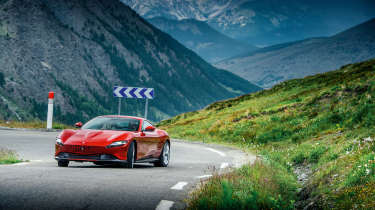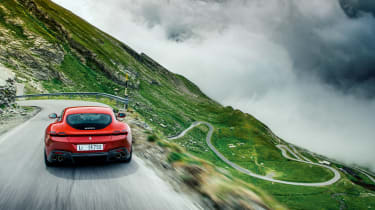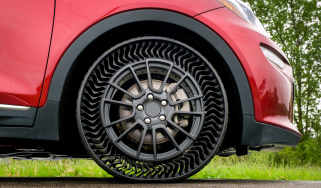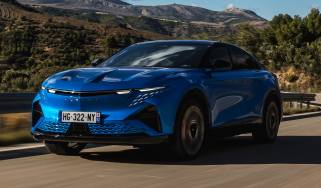Ferrari Roma 2025 review – a near perfect take on the classic GT
Direct, engaging handling and superb ride quality, plus strong performance: the sharp-suited Roma nails its GT brief
The Ferrari Portofino (née California) always felt like Ferrari’s SUV - before the Purosangue loomed in to assume that role – a car Maranello felt it needed to make to bring in a new audience. The Ferrari Roma is an altogether more impressive car, a proper Ferrari, a proper GT and definitely not a mildly tweaked Portofino.
The sharp-suited Roma was developed with none of the constraints that burdened the Portofino - a Ferrari with its claws clipped, its roar muted, to render it docile enough for any customer. Imagine the F8 Tributo reformed as a front-engine, rear-drive coupe and you’re pretty much on the money. Yet while it’s as dynamic, fast and sporty as you want, importantly it also nails the GT bit of the brief as well.
> New 2025 Ferrari Roma spied testing
There’s no question that the Roma arrived as the smoothest, most elegant production car from Ferrari in a decade, in style a successor to models such as the 550 Maranello. The engineering team has absolutely nailed the ride, which is exceptionally supple yet tightly controlled and quiet. In the Roma hard-top or the Roma Spider fabric-roofed convertible you get this essential piece of the GT armoury together with refinement, all-day comfort and effortless performance.
More reviews
Yes, it would be awesome with a 600bhp V12, making it a true 550 Maranello successor, but as it stands the Roma is a brilliant, authentic introduction to Ferrari, a first step on the ladder that many will linger on for a while, so well does it deliver on its promise.
Ferrari Roma: in detail
- Performance and 0-60 time > The Ferrari Roma is a prodigiously fast road car with performance instantly accessible across a wide range of engine speeds
- Engine and gearbox > There’s a seductive, old-school feel to the Roma’s flat-plane-crank V8 and dual clutch gearbox. There have been better sounding Ferrari GTs but few more enjoyable
- Ride and handling > Coupe or Spider, the Ferrari Roma’s chassis is superbly configured for fast road driving
- MPG and running costs > Use the V8 as nature intended and efficiency will be sacrificed but the Roma can eek out the miles better than most GTs of similar potency to keep costs in check
- Interior and tech > A cabin that feels truly special and is more practical than you might think is marred somewhat by a difficult control interface
- Design > The Roma has to be one of Ferrari’s best designs of the modern era, a car of beauty and presence that’s even better in the metal
Prices, specs and rivals
The Ferrari Roma launched in 2019 but when the Roma Spider convertible arrived in 2023, Ferrari stopped taking orders for the hard-top car and, for the time being, only the Spider is on sale. The Roma was priced at just over £183,000, a figure that would quickly rise with a delve into the extremely long and expensive options list. The Roma Spider convertible opens at £210,000.
The Roma’s rivals include the Aston Martin DB12, that probably sits closest in terms of space inside, performance and price point, as well as Bentley’s Continental GT and the Mercedes-AMG SL63. In its higher specifications, the SL63 is priced very close to the Roma, but comes with more tech both inside the cabin and under the skin. Maserati's GranTurismo is another rival, although its twin-turbocharged V6 does give away a decent chunk of performance despite the clever new all-wheel drive system. If straight-line speed is higher on your priority list, the all-electric Folgore version could also be considered.
evo comment
‘It’s not a Portofino with a fixed roof.’ That’s what Ferrari told us back in November 2019 when it unveiled the Roma. ‘Seventy per cent is new. It’s a GT with a sporting edge; it has Side Slip Control and a five-setting Manettino with a Race mode…’ Being healthily sceptical, only when we’d driven it did we know exactly what sort of Ferrari the Roma is. Ferrari was right.’ – John Barker
Ferrari Roma specs
| Engine | 3855cc, twin-turbo |
| Power | 611bhp @ 5750-7000rpm |
| Torque | 560lb ft @ 3000-5750rpm |
| Weight | 1570kg (395bhp/ton) |
| 0-62mph | 3.4sec |
| Top speed | 199mph+ |
| Basic price (2024) | 183200 |




